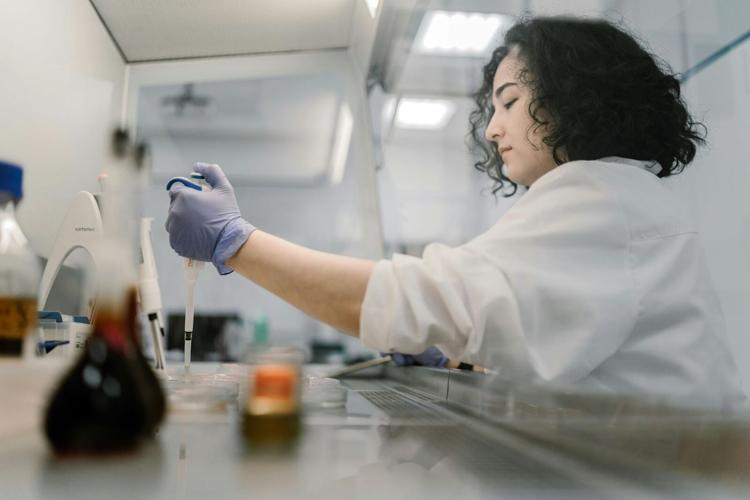The symptoms identified by Parkinson’s disease are usually visible, and they are described as tremors, stiffness, and slow movements. However, even before these symptoms are identified, the neurons have been significantly impaired.
To safeguard and regenerate cells before they are doomed to irreversible damage, researchers and clinicians seek, primarily, to control the symptoms through treatments such as cellular therapy for Parkinson’s, but also to significantly change the course of the disease.

The Silent Progression Before the Symptoms Show
The disease starts a long time before patients usually begin stem cell therapy for Parkinson’s. This silent period may take years, and it interferes with essential cellular communication networks.
The signs that may be ignored early and become subtle include:
- Loss of smell (anosmia)
- Disorders of sleep, especially REM sleep behavior disorder.
- Gastrointestinal alteration and constipation.
The timely detection of these signals and the proactive response may mean that it is possible to slow the disease progression, and the symptoms may be addressed when the damage is extensive.
How Parkinson’s Disease Alters the Cellular Landscape
Within the affected neurons, there are abnormal protein masses that are called Lewy bodies- clumps that are mainly made up of misfolded alpha synuclein. These aggregates distort the typical cell functions, interfere with energy production, and cause inflammation of the neural tissue around them.
This cell sequence of stressors results in:
- Mitochondrial destruction: The cells grow frail due to the destruction of energy-generating functions.
- Oxidative stress: the imbalanced ratio between free radicals and antioxidants will produce cell membrane and DNA destruction.
- Neuroinflammation: The Brain (microglia) is an inflammatory cell hyperactive, resulting in collateral damage.
- Synaptic degeneration: In this case, the neurons become unable to communicate with one another, and this is observed in motor control and thinking.
The study of these mechanisms will help to understand that intervention should take place at the cellular level as soon as possible, before the death of neurons becomes global.
Rethinking Treatment: From Managing Symptoms to Preserving Cells
Around 1 million people in the US live with Parkinson’s disease. Treatment of Parkinson's is changing to neuroprotection and cellular preservation- a technological approach that involves preserving and replacing the existing neurons and regenerating damaged neurons, respectively.
New directions of therapies are:
- Antioxidant treatment to lessen the oxidative stress and cellular energy generation to stabilize.
- Anti-inflammatory genes to prevent overactivation of the microglia.
- Mitochondrial survival compounds to improve neuron survival.
Using the approach of maintaining the health of the cells through cellular therapy for Parkinson’s instead of treating the symptoms, researchers believe this will allow them to recreate the natural progression of the disease.

The Science Behind Early Cellular Intervention
The goal of early intervention on cells is to restore the neuronal environments before significant damage is inflicted. It is now possible to identify and treat early cellular dysfunction with the use of scientific advances that include:
- Biomarker identification: The determination of the alterations in alpha-synuclein levels, mitochondrial activity, or the neuroinflammatory levels in blood, cerebrospinal fluid, or imaging.
- Neuroprotective substances: The assistance of molecules that prevent the toxic effect of protein misfolding and oxidative stress.
- Stem cell treatment: this involves the transplantation of healthy and differentiated cells that have the capacity to either replace lost neurons or to provide nutrients to the intact neurons.
- Gene editing and modulation: Activation or deactivation of faulty genes that translate to faulty aggregation of proteins or a lack of energy.
Such organizations as Swiss Medica are contemplating the solution of regenerative medicine, which is intended to heal and rejuvenate the brain cells in order to get brain functioning back to normal.
Making Early Detection a Reality
This is because early cellular intervention, such as stem cell therapy for Parkinson's, is possible only on a single condition, which is early detection. Nonetheless, one of the greatest challenges is to diagnose Parkinson's disease at an early stage before the symptoms appear.
To overcome this, scientists are coming up with tools that can identify cellular changes that occur as a result of a disease in advance, such as:
- Higher-level imaging methods (e.g., PET and MRI) that show early brain alterations.
- Biochemical tests to identify misfolded alpha-synuclein in tissues of the periphery e.g,. skin or saliva.
- Electronic surveillance that records minute movement patterns, speech alterations, or handwriting variations.
- Genetic testing to discover those individuals who are at increased risk because of mutations in genes, including LRRK2 or PARK7.
The possibility of incorporating these diagnostic tools into standard clinical care has the potential to change the process of diagnosing and treating Parkinson's.
A Glimpse into the Future of Neuroregeneration
The end product of early intervention is neuroregeneration, or the ability to fix broken neural networks as well as prevent the development of a disease.
The future directions might be:
- Individual regenerative treatments involve the utilization of cells of a patient to regenerate damaged brain tissue.
- Delivery systems that are based on nanotechnology and can deliver neuroprotective agents directly to the affected neurons.
- Predictive models based on artificial intelligence to determine the most effective intervention periods to use by each individual.
Together, these advances would turn Parkinson’s disease into a degenerative disorder into a manageable -and possibly reversible- one.
Acting Before It’s Too Late
Parkinson's disease does not attack, but it develops silently, cell by cell, long before the initial tremor sets in. When the process of standard treatments is initiated, there is a possibility that the neurons have already started to close the window. That is the reason why early stem cell therapy for Parkinson's is important- it means it is the option of taking action before it is too late.





(0) comments
We welcome your comments
Log In
Post a comment as Guest
Keep it Clean. Please avoid obscene, vulgar, lewd, racist or sexually-oriented language.
PLEASE TURN OFF YOUR CAPS LOCK.
Don't Threaten. Threats of harming another person will not be tolerated.
Be Truthful. Don't knowingly lie about anyone or anything.
Be Nice. No racism, sexism or any sort of -ism that is degrading to another person.
Be Proactive. Use the 'Report' link on each comment to let us know of abusive posts.
Share with Us. We'd love to hear eyewitness accounts, the history behind an article.